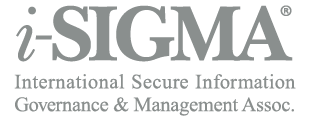Efficiently Keeping Your Business in Compliance
May 10, 2023
Running a business can be a daunting task, especially when it comes to ensuring compliance with various regulations and laws. Compliance is important not only for legal and ethical reasons but also for the efficiency of your business. By partnering with an i-SIGMA Certified Company who has obtained either their NAID AAA or PRISM Privacy+ Certification, your company is already leagues ahead in terms of compliance. The list below highlights ten things you can do to help run your business more efficiently, all of which are required of i-SIGMA Certified Providers. Find an i-SIGMA Certified Service Provider Here >>
Identify and prioritize compliance requirements
The first step towards efficient compliance is to identify and prioritize the requirements that apply to your business. Depending on your industry and location, you may need to comply with various regulations, such as data privacy laws, labor laws, and tax regulations. Make a list of these requirements and prioritize them based on their importance and impact on your business.
Create a compliance program
Once you have identified the compliance requirements, create a compliance program that outlines the policies and procedures for meeting these requirements. This program should be tailored to your business and should cover all relevant compliance areas. Ensure that all employees are trained on the compliance program, and make sure that it is regularly updated to reflect changes in regulations.
Hire a compliance officer
If your business is large enough, consider hiring a dedicated compliance officer who will oversee the compliance program and ensure that all employees are following the policies and procedures. The compliance officer should have a thorough understanding of the regulations that apply to your business and should be able to keep up with any changes in these regulations.
Use technology to automate compliance tasks
Technology can help you automate many compliance tasks, such as tracking employee hours, filing tax returns, and monitoring data privacy compliance. By automating these tasks, you can reduce the risk of human error and save time and resources. Consider investing in compliance software that can help you manage compliance more efficiently.
Conduct regular compliance audits
Regular compliance audits can help you identify areas where your business may not be meeting regulatory requirements. These audits should be conducted by an independent third party who has expertise in the relevant compliance areas. The findings of the audit should be used to improve the compliance program and make any necessary changes to policies and procedures.
Monitor regulatory changes
Regulatory requirements are constantly changing, and it’s important to stay up-to-date on these changes. Subscribe to regulatory newsletters and attend relevant conferences and events to stay informed about any changes that may impact your business. Update your compliance program and policies as needed to ensure that you are meeting the latest regulatory requirements.
Train employees on compliance
All employees should be trained on the compliance program and the policies and procedures for meeting regulatory requirements. This training should be provided on a regular basis and should cover all relevant compliance areas. Ensure that employees understand the importance of compliance and the consequences of non-compliance.
Implement a whistleblower policy
A whistleblower policy can help you identify and address compliance issues before they become serious problems. This policy should provide employees with a way to report any suspected violations of regulations or company policies without fear of retaliation. Ensure that all employees are aware of the whistleblower policy and understand how to use it.
Maintain accurate records
Accurate record-keeping is essential for compliance. Keep all relevant records, such as financial statements, tax returns, and employee records, organized and up-to-date. Use a secure storage system to protect sensitive information and ensure that only authorized personnel have access to these records.
Seek professional help
If you’re unsure about how to meet regulatory requirements or if you’re facing a compliance issue, seek professional help. Consult with a lawyer or compliance expert who can provide you with guidance and advice on how to meet regulatory requirements and avoid compliance issues.
Compliance is a critical aspect of running a business, and it’s important to ensure that your business is meeting all regulatory requirements. By following the ten steps outlined in this article, with the help of an i-SIGMA Certified Service Provider, you can help run your business more efficiently with compliance and reduce risk.


